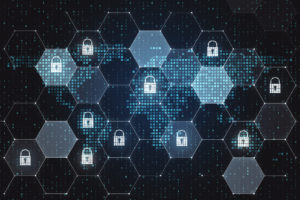
However, the impact COVID-19 has on our lives doesn’t have to be entirely negative. Former British Prime Minister Sir Winston Churchill often receives credit for coining the phrase, “Never let a good crisis go to waste.” Although Churchill wasn’t speaking specifically about a pandemic, that saying can certainly still apply to the current public health catastrophe. For CISOs and CIOs, this can serve as an opportunity to get the rest of your team on board with technologies and initiatives that they were reluctant to try out before, but that have become vital to maintain optimal security posture in the post-coronavirus world.
The Impact of COVID-19 on IT Security
The biggest and most immediate change in corporate culture caused by the pandemic was the shift to remote work arrangements. From mid-March to mid-April, the portion of employed Americans who reported working remotely because of concerns about the novel coronavirus increased from 31 percent to 62 percent, according to Gallup.
Many of the people who transitioned to working from home because of the pandemic aren’t exactly eager to get back to the office either: Only 26 percent told Gallup that they wanted to return to their workplaces after businesses and schools reopen. Prominent companies like Twitter and Facebook have announced their willingness to accommodate employees who want to keep working from home forever, according to the Forbes article “Here Are The Companies Leading The Work-From-Home Revolution.”
Additionally, a couple months ago, the U.S. Department of Homeland Security (DHS) Cybersecurity and Infrastructure Security Agency (CISA) and the United Kingdom’s National Cyber Security Centre (NCSC) issued an alert about cybercriminals seeking to exploit the public health crisis via COVID-19-themed schemes. Their tactics have included phishing emails, fraudulent websites and cyberattacks targeting vulnerabilities in remote work solutions, according to Sophos.
The outbreak of coronavirus-related cyberattacks combined with the migration to work-from-home arrangements means companies looking to avoid data breaches must adjust their approach to cybersecurity to match the new normal. It seems that many business leaders understand the need to invest in additional security measures to continue to combat evolving threats while accommodating remote workers: The majority (56 percent) of enterprise executives included in a survey conducted by HFS Research said they expected to spend more on security (as a subset of IT investments) because of COVID-19.
Turning the Pandemic Into a Springboard for Security Solution Adoption
If your team has already accepted the fact that they need to embrace new tech and adjust their routines to succeed in a world drastically changed by COVID-19, this is your opportunity to get buy-in for cybersecurity solutions and projects that didn’t garner much support or interest before the current crisis. If your end users were skeptical that they really needed to adopt advanced IT security measures before the novel coronavirus became a problem, it should be much easier to illustrate the need for higher levels of protection now.
For example, if your team previously wasn’t enthused about implementing multi-factor authentication, you could win them over by pointing out that your organization could use an extra layer of security for remote workers. Some other types of IT security measures that make sense for distributed teams include the following:
- Mobile Device Management
- Zero-Trust Network Architecture
- Endpoint and network Managed Detection and Response (MDR)
- Device encryption
It’s also important to make the business case for these technologies using terms that your CFO and finance team can relate to. Note that if your company has transitioned to remote work, you can offset the cost of these IT and cybersecurity solutions by reducing real estate expenditures. For instance, if you have two offices downtown, but scale back to just one office due to the reduction in on-site workers, you can put some of that spend toward these new remote work measures, and typically end up with a net savings in operating expenses – that’s music to everyone’s ears!
As the HFS research report shows, many executives understand that having a robust cybersecurity strategy is more important now than ever before. Just as we’ve changed how we live to slow the spread of COVID-19, we must also adjust our approach to security to thwart coronavirus-related cybercrime and address new points of vulnerability created by the transition to remote work.
If you’d like to learn more about remote work solutions, cybersecurity strategy or any of the other topics addressed in this article, our team would be happy to help you. You can reach us by calling 877-599-3999 or emailing sales@stratospherenetworks.com.


